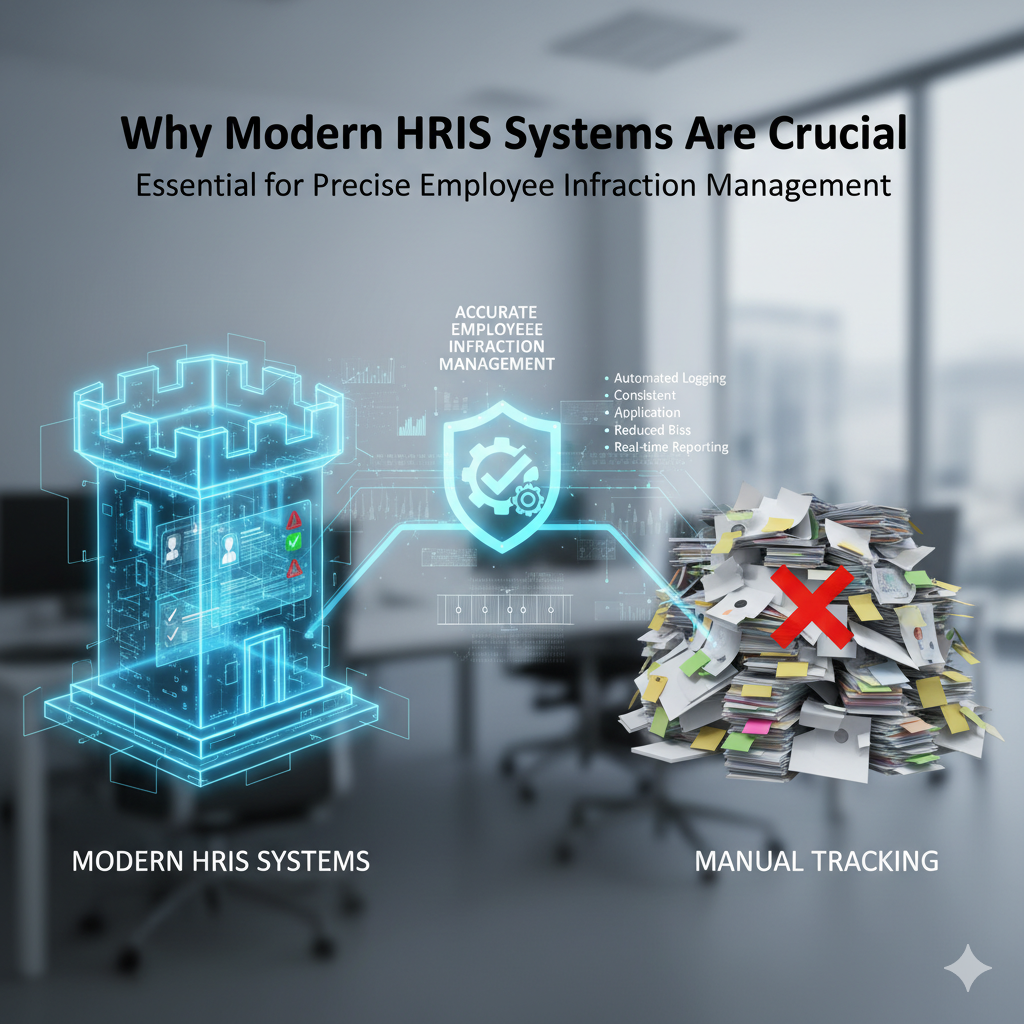In today’s fast-paced business world, managing employee performance and behavior goes far beyond traditional spreadsheets and paper-based reports. Organizations need real-time insights, transparency, and consistency — especially when handling employee infractions. That’s where a Modern Human Resource Information System (HRIS) becomes an essential tool for HR departments.
This article explores how modern HRIS platforms help companies accurately track, document, and manage employee infractions while promoting fairness and compliance.
What Are Employee Infractions?
Employee infractions refer to violations of company policies, procedures, or workplace standards. These may include attendance issues, misconduct, policy breaches, or performance-related concerns. Traditionally, HR teams relied on manual documentation or spreadsheets to record these incidents — a process prone to errors, delays, and inconsistencies.
With an HRIS, these challenges are minimized through automation, centralized records, and structured workflows.
Centralized Infraction Tracking and Documentation
A key advantage of using an HRIS is the centralized management of disciplinary records.
Every infraction is logged, categorized, and timestamped in a single, secure database.
✅ Benefits include:
- No lost or duplicated records
- Easy access to employee history
- Organized documentation for audits and reviews
- Instant report generation for management
For example, instead of HR staff searching through multiple files to find a past warning letter, a few clicks in the HRIS can retrieve all related infractions instantly.
Ensuring Fair and Consistent Disciplinary Action
Consistency is critical in maintaining workplace fairness.
A modern HRIS helps ensure that similar violations receive similar consequences, regardless of department or supervisor.
By using predefined disciplinary templates and workflows, HR systems can:
- Automate policy-based warnings
- Escalate repeated violations
- Maintain transparency across HR and management
This prevents bias and ensures that disciplinary measures align with company policies.
Real-Time Alerts and Notifications
HRIS platforms can send automated notifications to HR teams, supervisors, or employees when an infraction is logged or escalated.
This feature ensures:
- Prompt communication
- Immediate corrective action
- Documentation of follow-ups and resolutions
For instance, if an employee accumulates three tardiness records, the system can automatically notify HR to issue a formal warning.
Integration with Attendance and Performance Modules
Modern HRIS systems integrate seamlessly with attendance, performance, and payroll modules, making it easier to detect patterns that may indicate infractions.
Example:
- Attendance module flags habitual tardiness
- Performance module tracks missed targets
- HRIS links both to generate an accurate infraction summary
This interconnected approach ensures decisions are data-driven and not based on assumptions.
Legal Compliance and Audit Readiness
Employee infractions can become legal concerns if not handled properly.
An HRIS maintains a transparent and time-stamped audit trail, providing evidence in cases of disputes, grievances, or compliance audits.
✅ HRIS ensures:
- Complete visibility into all recorded actions
- Compliance with labor laws and company policies
- Protection against wrongful termination claims
This digital paper trail protects both the organization and employees.
Data-Driven Insights for HR Decision-Making
Modern HRIS platforms provide analytics dashboards that help HR managers identify behavioral trends and risk areas.
For instance:
- Departments with frequent infractions
- Most common policy violations
- Correlation between infractions and turnover rates
These insights help HR leaders implement proactive strategies such as training, counseling, or revised policy enforcement.
Enhancing Employee Accountability and Transparency
Employees can often view their own records through the HRIS employee self-service portal.
This transparency fosters a sense of accountability — when employees know that actions are tracked and visible, they’re more likely to adhere to company standards.
It also encourages open communication between HR and employees, helping to resolve issues before they escalate.
Conclusion
Managing employee infractions is no longer just about issuing warnings or suspensions — it’s about maintaining fairness, compliance, and trust in the workplace.
A modern HRIS system empowers organizations to:
- Automate infraction tracking
- Ensure consistency in disciplinary actions
- Maintain compliance with legal requirements
- Gain actionable insights for continuous improvement
In short, adopting an HRIS for employee infraction management transforms HR from reactive record-keeping to proactive, data-driven decision-making.

